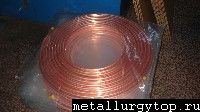Beryllium
 The Department of Health and Human Services (DHHS) and the International Agency for Research on Cancer (IARC) have determined that beryllium is a human carcinogen. The EPA has determined that beryllium is a probable human carcinogen. EPA has estimated that lifetime exposure to 0.04 µg/m³ beryllium can result in a one in a thousand chance of developing cancer.
The Department of Health and Human Services (DHHS) and the International Agency for Research on Cancer (IARC) have determined that beryllium is a human carcinogen. The EPA has determined that beryllium is a probable human carcinogen. EPA has estimated that lifetime exposure to 0.04 µg/m³ beryllium can result in a one in a thousand chance of developing cancer.
While solid beryllium is not harmful, the dust created as result of working with beryllium metal, metal oxides, alloys, ceramics, or salts can be deadly. If ingested into the lungs the dust can cause scarring leading to beryllium disease and lung cancer. Beryllium disease is. An estimated 2–6% of workers exposed to beryllium eventually develop beryllium disease and up to one third will die as a result. Once exposed to beryllium there is a lifelong risk of developing Acute Beryllium Disease (ABD). It usually has a quick onset and resembles pneumonia or bronchitis.
One to fifteen percent of all workers occupationally exposed to beryllium dust develop Chronic Beryllium Disease (CBD), a painful incurable lung disease. Symptoms of Chronic Beryllium Disease, also known as berylliosis, include breathing difficulties, chest pain, coughing, and general weakness. While the average latency period is about eight to ten years, Chronic Beryllium Disease can develop as late as thirty years after last exposure. CBD in some people progresses slowly, but in others much more rapidly.
Chronic Beryllium Disease
Chronic beryllium disease was first described in 1946. Symptoms usually include:
o labored breathing o shortness of breath o cough o fever o anorexia o weight loss
Other effects that have been observed in individuals with severe cases of chronic beryllium disease include damage to the right heart ventricle, hepatic necrosis, kidney stones, granulomatous hepatitis and hypercalcemia.
Skin lesions are the most common external indicators of chronic beryllium disease. and kidney stones can also occur.
Chronic beryllium disease will continue to progress if left untreated. While there is no cure for chronic beryllium disease, it can be treated. The disease does not progress in all patients. If it does, some patients' disease progresses faster than others. While some die within a few years of diagnosis, others experience a downhill course extending over decades.
Diagnosing Chronic Beryllium Disease
Chest X–rays and blood tests known as the beryllium lymphocyte proliferation test, are used to diagnose chronic beryllium disease.
Acute Beryllium Disease
Symptoms of acute beryllium disease include shortness of breath, chest pain, cough and acrocyanosis. Two types of the acute disease have been identified. The «fulminating» or rapid type develops within three days of an exposure to high concentrations of beryllium particles.
Beryllium (atomic number 4) discovered in 1797 by French chemist Louis Nicolas Vauquelin (1763–1829), is a naturally occurring metallic element found in rocks, coal, oil, volcanic dust and even the soil in your backyard. Beryllium gets its name from the mineral beryl in which it can be found.
Beryllium's physical and mechanical properties are unmatched by any other metal. Beryllium is non–magnetic, lightweight, hard, and can withstand extreme heat, remain stable over a wide range of temperatures, allowing it to function as an excellent thermal conductor. These attributes make beryllium a unique material suitable for a host of modern demanding industrial applications. For many important industries, beryllium is the only suitable material for the job.
A brief list of products dependent on beryllium or a combination of beryllium and copper would include:
o Battery contacts
o Electronic connections
o Cell phones and base stations
o Underwater fiber optic cable
o Air bag sensors
o Power steering
o Fire extinguishers
o Sprinkler heads
o Pacemakers
o Lasers for blood testing
o High resolution x–rays
o Mammography equipment
o Infrared countermeasure systems
o Radar navigation systems
o Surveillance satellites, and
o Aircraft landing gear components.
o Microprocessor connectors
o Ultra–high speed optical laser
o Airport luggage handling
o Apache helicopters
o Fighter aircraft
o Tanks
o Nuclear weapons
o Dental work
o Bicycle frames
o Tools
o Dyes
Reacting to many cases of what was known as «chemical pneumonia», OSHA adopted community ambient air standards in 1949 for beryllium that remain intact today. The EPA classifies beryllium dust and fumes as toxic air pollutants.
Approximately 800,000 workers in the United States work with and around beryllium. The industries in which beryllium can be found include:
oElectronics (transistors, heat sinks, x–ray windows)
oAtomic energy (heat shields, nuclear reactors, nuclear weapons)
oLaboratory work (research and development, metallurgy, chemistry)
oMetal working (pure beryllium, copper and aluminum alloys, jet brake pads, aerospace components)
oCeramic manufacturing (semi–conductor chips, ignition modules, crucibles, jet engine blades, rocket covers)
oExtraction (Smelting and refining of ore and scrap metal)
oDental work (alloys and crowns, bridges, dental plates)
oX–ray tube manufacturing
oPlastic molding
oPrecision machining
oRocket parts and heat shields
If you have been exposed to beryllium and have any symptoms consult your physician immediately.
You may also have damages recoverable in a lawsuit. Consult an attorney experienced in beryllium litigation.
© Copyright 2005 Capital Transaction Group Inc





Адрес заметки: http://metallurgytop.ru/post_1213532886.php
Рейтинг популярности - на эти заметки чаще ссылаются:
- 43 Герой социалистического труда
- 42 Известный телеведущий целую неделю снимал о Южном Урале
- 41 Первый чугун на каменном угле
- 39 Механизация очистки горновых канав
- 38 Замена конвейерных лент
- 36 Отработка верхнего шлака
- 34 Безотходное производство чугуна
- 33 Металлургия России: всем выйти из кризиса Читать полностью:
- 33 Ремонты чугунных и шлаковых канав
- 33 Системы программного управления